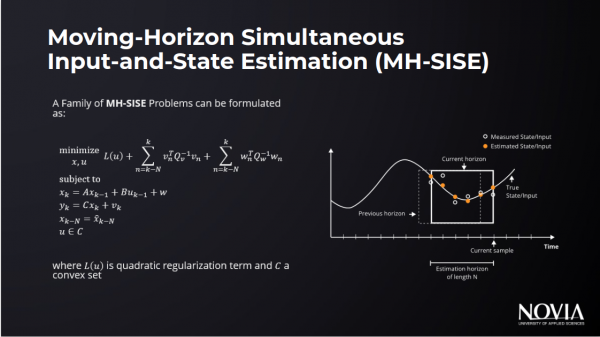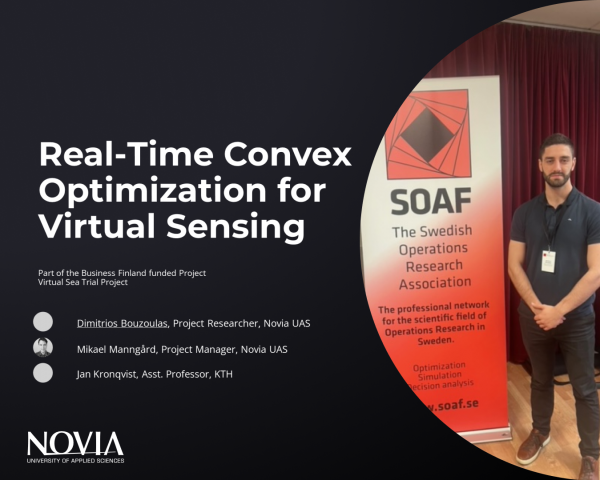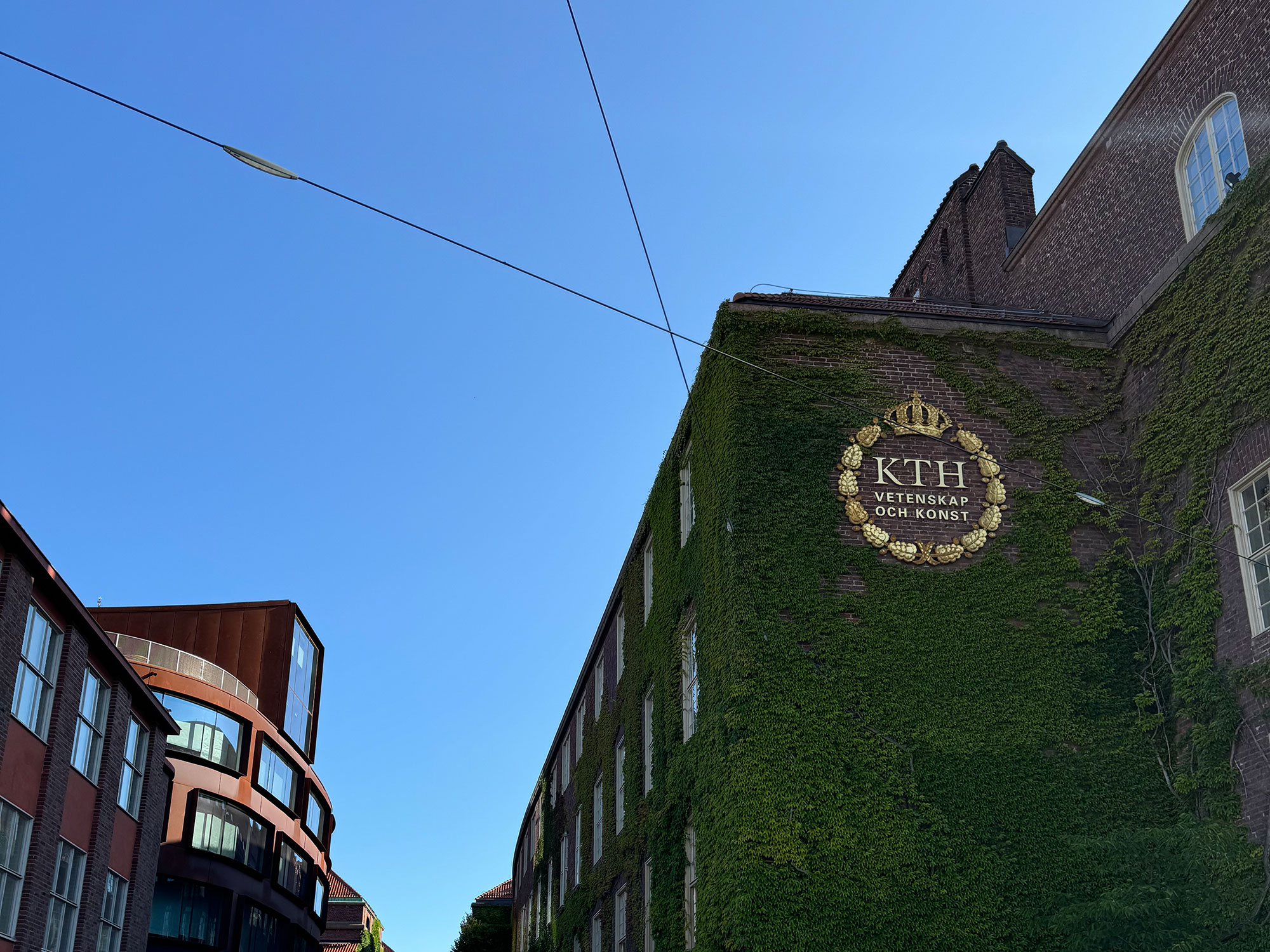Introduction
I have enjoyed visiting the KTH Royal Institute of Technology in Stockholm, Sweden, for the past three months. The research visit was part of the Virtual Sea Trial project, with KTH as an international collaborator. I selected to visit KTH for its reputation as one of Europe’s top technical universities, combined with the expertise of the Optimization and Systems Theory group at the Department of Mathematics and the guidance of Jan Kronqvist, my advisor, during the exchange. All this made KTH an ideal destination for my visit, supporting my research goals and advancing my understanding of optimization methods.
My time at KTH was very pleasant. I was surrounded by researchers doing great work and sharing their insights on a range of academic topics. Additionally, the university and campus that provided all necessary tools and spaces for me to do my work. It should also be mentioned that KTH proved to be one of the most beautiful Universities I’ve ever been to. This paired with the beautiful Venice of the Nordics (Stockholm) made the trip a truly pleasant and unforgettable experience.

Views from the KTH Campus.
Research at KTH
During my time at KTH, I had the opportunity to collaborate with optimization experts and dive deeply into the topic of real-time convex optimization. The main goal of the visit was to develop convex optimization techniques for virtual sensing. The main challenge was how to implement such methods in real-time applications. Thus, my research focused on evaluating whether these methods could be implemented and solved in real time for maritime thruster applications.
Contrary to common belief, we demonstrated that real-time convex optimization is feasible in this use-case, even for processes with fast dynamics and high sampling rates. By leveraging code generation tools like CVXGEN [1], we generated highly efficient code tailored to our specific problem, enabling us to meet real-time requirements for virtual sensing, thus making convex-optimization-based virtual sensing a viable tool in practice.

Figure 1. Optimization Problem for Input Signal Reconstruction
Virtual Sensing: A Brief Overview
Virtual sensing refers to a collection of algorithms used to reconstruct unknown signals of a system that cannot easily be measured directly with physical sensors. It is crucial to distinguish between a “virtual sensor” and a “physical sensor.” A physical sensor is a hardware device installed I the system to measure a specific signal. In contrast, a virtual sensor is an algorithm implemented through software to reconstruct unknown signals with the help of indirect physical measurements and mathematical models. Our virtual-sensing method is summarized and illustrated in Figure 1.
For in-depth reading about virtual sensing in maritime thrusters, the reader is referred to the papers summarized in Table 1. These papers, together with our newly produced results, constitute the current state-of-the-art virtual sensing for maritime propulsion systems.
| Authors | Year published | Title | Summary |
| Ikonen, T. et al. [3] | 2015 | Inverse ice-induced moment determination on the propeller of an ice-going vessel | A method for reconstructing the ice-induced moments in a propeller shaft line was proposed and solved as an inverse problem. |
| Manngård, M. et.al. [2] | 2022 | Torque estimation in marine propulsion systems. | An augmented Kalman filter for torque estimation in marine propulsion systems was proposed. |
| Hakonen U. [4] | 2023 | Torque estimation for maritime powertrains using convex optimization | This M.Sc. thesis studied the reconstruction of shaft torque in maritime powertrains using convex optimization. |
| Hakonen U. et al. [5] | 2024 | Torque Reconstruction for Maritime Powertrains Using Trend Filtering | This paper presents a trend-filtering approach for the simultaneous reconstruction of unknown input torque and torsional response in the driveline of an azimuth thruster. |
Table 1. State-of-the-art in virtual sensing for torque estimation in marine propulsion systems.
The SOAK Conference
We presented our findings during the SOAK conference in Nyköping, Sweden, in October 2024. The conference was arranged by the Swedish Operations Research Association (SOAF). Furthermore, we have submitted a manuscript of our findings for peer review at a meeting, which we hopefully can show next year.
At the SOAK conference, I learned about how optimization theory is developed and applied by researchers in the field of operations research. For example, we learned how vehicle routing problems get solved, how energy grids are stabilized through optimization of battery storage systems, and how state-of-the-art optimization solves are developed. Furthermore, after the conference, companies GAMS, Mosek, and Hexaly, leaders in optimization tools and solvers, arranged an outstanding tutorial day for the researchers.

Figure 2. At the SOAK conference arranged by the Swedish Operations Research Association (SOAF).
Things I’ve learned
During my trip, I learned a lot about optimization theory, and now I can better grasp the process of creating and solving optimization problems. Additionally, I developed the ability to formulate and construct optimization problems and constraints from real-world problems and, using my software engineering skills, implement software tools to solve them. This experience has inspired me to dedicate even more time to studying optimization theory and contribute further to the maritime field.
About the Virtual Sea Trial Project
This research visit was made possible through the Business Finland-funded Co-Innovation project Virtual Sea Trial, coordinated by Novia University of Applied Sciences, with KTH Royal Institute of Technology as an international collaborator. The Virtual Sea Trial project aims to innovate shipbuilding and commissioning processes by introducing virtual commissioning elements. The goal is to left-shift software and system integration testing from months to years earlier than traditionally possible, thereby reducing the risks associated with adopting new technologies and minimizing the time and emissions involved in sea trials.
Acknowledgments
Finally, I am very grateful to my supervisors, Jan Kronqvist and Mikael Manngård, for enabling me to make this visit and for their support, and I hope to be back at KTH sometime in the future. I am also grateful for the financial support by Business Finland through the Virtual Sea Trial project.
References
The Travel report has been reviewed by Novia’s editorial board and accepted for publication on 22.11.2024.
ISSN: 2670-028X
Author:
Dimitrios Bouzoulas
Project Researcher, Novia UAS


